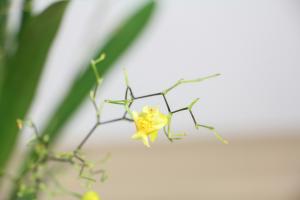What is one way in which plants regulate water loss?
Water is essential for plant growth and survival, but too much or too little water can be detrimental. As a result, plants have evolved various mechanisms to regulate water loss, particularly in environments where water is scarce. One of the ways in which plants regulate water loss is through the process of transpiration.
Transpiration
Transpiration is the process by which water is lost through the leaves of a plant. When water is absorbed by the roots of a plant, it travels up to the leaves through the xylem, which are specialized tubes that transport water and nutrients throughout the plant. Once the water reaches the leaves, it is then released into the atmosphere through small pores called stomata.
The opening and closing of stomata is regulated by two factors: the needs of the plant and the surrounding environment. Plants will open their stomata during the day to absorb carbon dioxide for photosynthesis, but this also allows for water to be lost through transpiration. However, plants will close their stomata during times of water stress in order to conserve water.
Factors Affecting Transpiration
There are several factors that can affect the rate of transpiration in a plant. One of these factors is temperature - as temperature increases, so does the rate of transpiration. This is due to an increase in the water vapor pressure gradient between the plant and the surrounding air. In addition, humidity levels can also affect transpiration rates. Plants in high-humidity environments will transpire less than plants in low-humidity environments.
The type of plant also plays a role in transpiration rates. Plants with larger leaves tend to transpire more than plants with smaller leaves, since they have a greater surface area for water loss. Additionally, plants that are adapted to dry environments, such as cacti, have specialized structures that help them conserve water and reduce transpiration rates.
Conclusion
In summary, plants regulate water loss through the process of transpiration. The opening and closing of stomata is regulated by both the needs of the plant and the surrounding environment. Factors such as temperature, humidity, and plant type can all affect the rate of transpiration. By understanding how plants regulate water loss, we can gain insight into how plants have evolved to survive in a wide range of environments.

 how many times do yo...
how many times do yo... how many planted tre...
how many planted tre... how many pine trees ...
how many pine trees ... how many pecan trees...
how many pecan trees... how many plants comp...
how many plants comp... how many plants can ...
how many plants can ... how many plants and ...
how many plants and ... how many pepper plan...
how many pepper plan...































